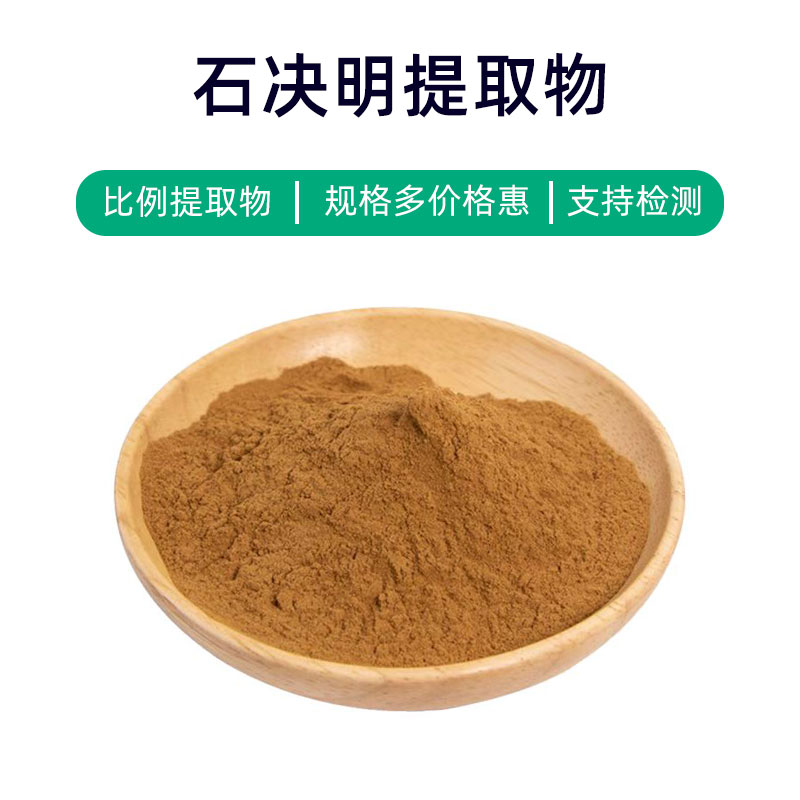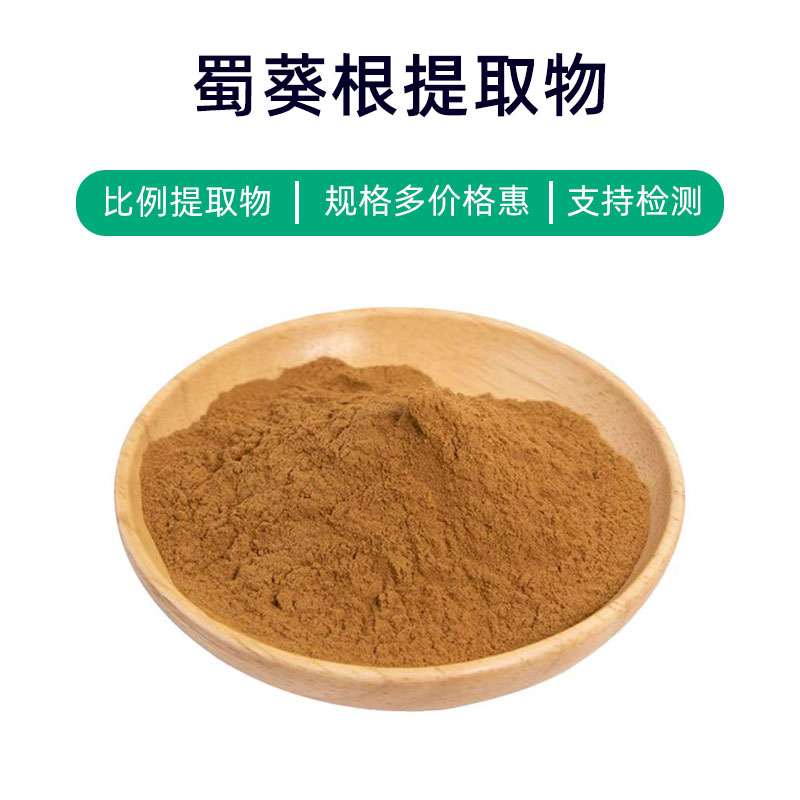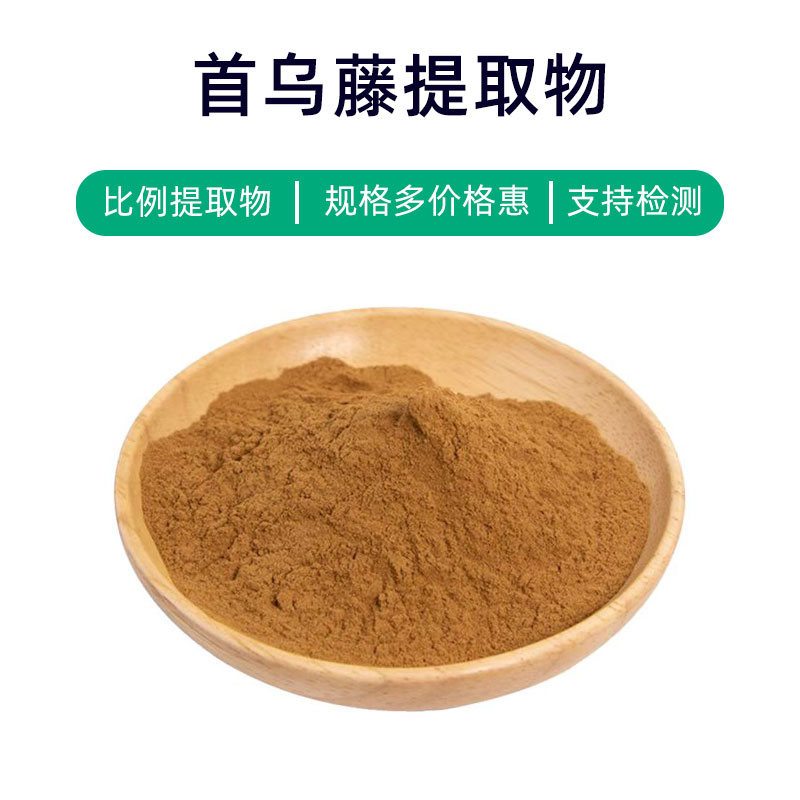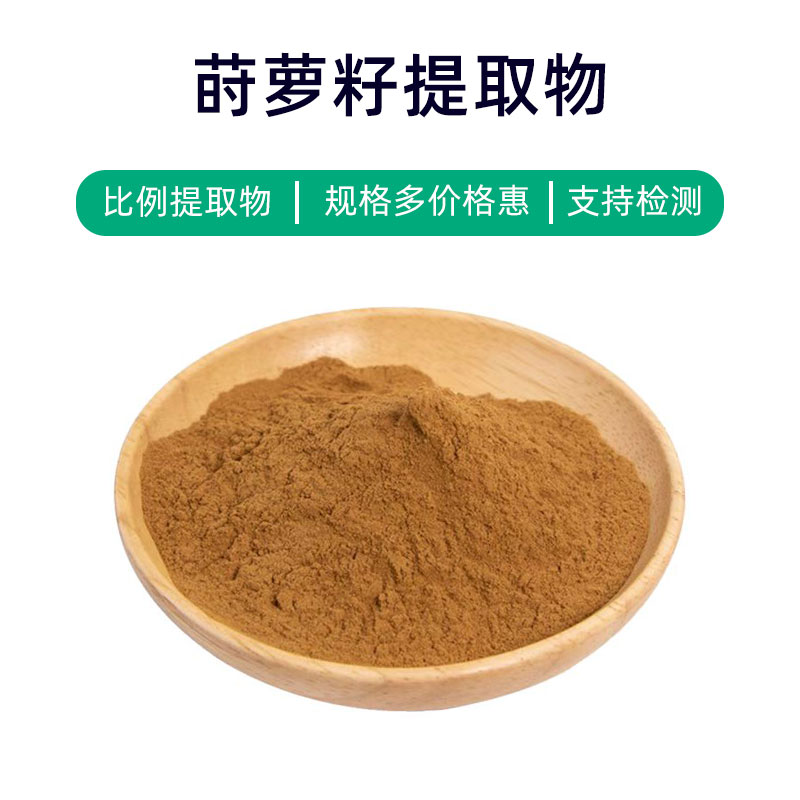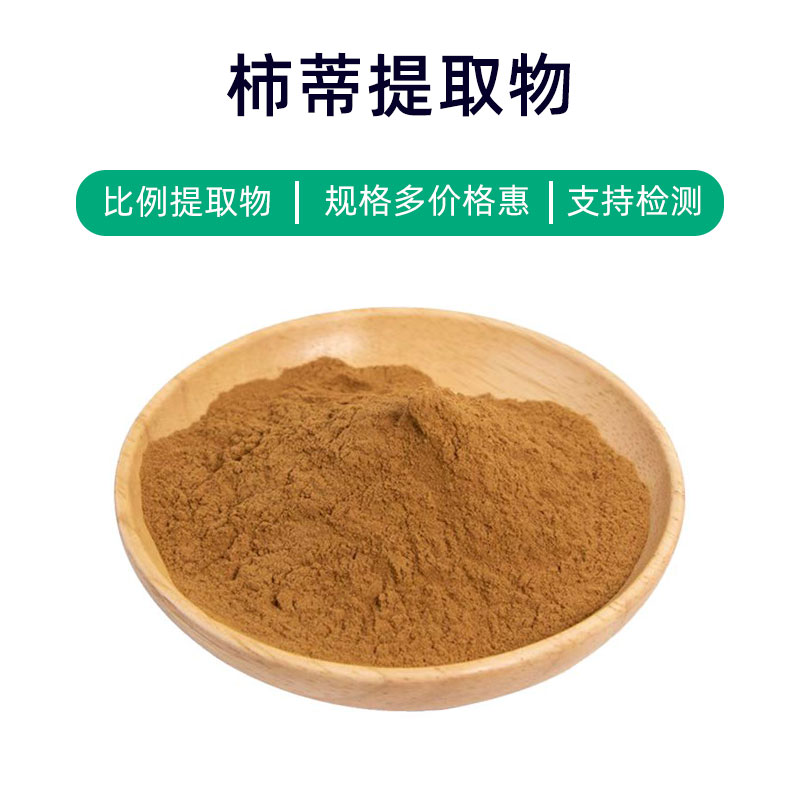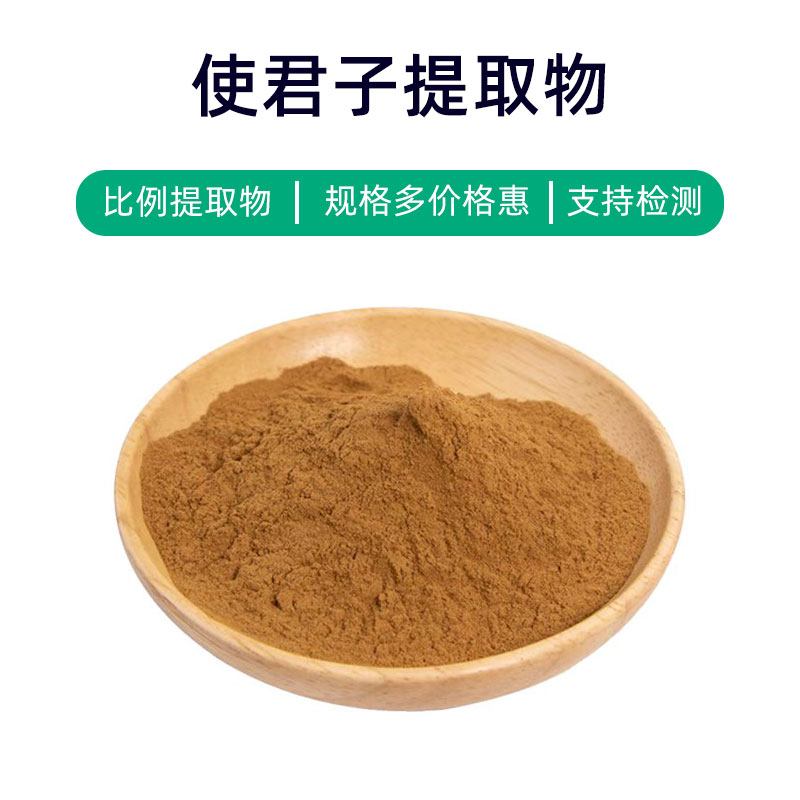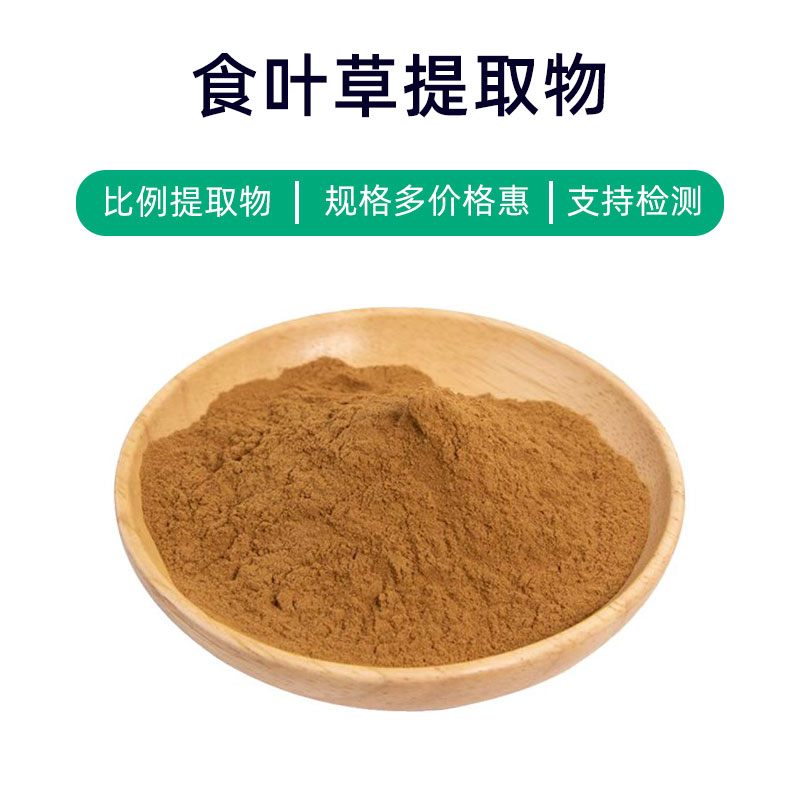Stone Cassia Extract Product Introduction
Stone Cassia extract is a natural plant extract derived from the seeds and fruits of the Stone Cassia plant. Its main components include significant amounts of emodin and chrysophanol, which provide the extract with various benefits and a wide range of applications.
First, Stone Cassia extract is widely used in the medical field. The emodin it contains has strong antioxidant and anti-inflammatory properties, which can help improve liver function and protect liver health, and it can also be used to treat constipation and other digestive system issues. Additionally, Stone Cassia extract is included in some traditional herbal formulations for body conditioning, promoting metabolism, and improving blood circulation.
Beyond medicine, Stone Cassia extract is also employed in dietary supplements and the food industry. It is often added to health products as a natural antioxidant and nutritional supplement to enhance immunity, regulate blood sugar and lipid levels, and improve skin health. In the food industry, it is used as a food additive to increase the nutritional value and functionality of products.
Furthermore, Stone Cassia extract finds use in the cosmetics field, where its excellent antioxidant and anti-inflammatory properties make it effective in skincare products, helping to reduce free radical damage, slow down skin aging, and enhance skin elasticity and radiance.
Overall, as a natural plant extract, Stone Cassia extract offers a variety of benefits and broad applications in fields such as medicine, health products, food, and cosmetics, providing effective support for health and beauty.
Stone Cassia Extract Production Process
The production process of Stone Cassia extract generally includes the following main steps:
- Raw Material Collection and Sorting: First, fresh seeds and fruits of the Stone Cassia plant are gathered as the extraction raw material. During collection, sorting is performed to remove impurities and damaged parts to ensure the quality and purity of the raw materials.
- Raw Material Processing and Grinding: The collected seeds and fruits are washed and treated to remove surface impurities and contaminants. The treated materials are then ground into a powder to enhance extraction efficiency.
- Extraction Process: The appropriate extraction method (such as water extraction or alcohol extraction) is employed to mix the ground Stone Cassia material with the extraction solvent thoroughly and carry out the extraction. During the extraction process, parameters such as temperature, time, and pressure must be controlled to ensure extraction efficiency and the quality of the extracted materials.
- Solvent Recovery and Concentration: After extraction, the extraction solvent is recovered through distillation or other methods to reduce costs and environmental pollution. The extract solution is then concentrated to produce Stone Cassia extract.
- Refining and Purification: The concentrated extract undergoes refining and purification to remove impurities and undesired components, thereby increasing the purity and activity of the extract.
- Drying and Packaging: Finally, the refined Stone Cassia extract is dried to reduce moisture to an appropriate level. The dried extract is then packaged, typically using airtight packaging to prevent moisture ingress and oxidation.
The above outlines the common production process for Stone Cassia extract, where each step needs to be strictly controlled to ensure the extract's quality and purity meet requirements.
Benefits and Side Effects of Stone Cassia Extract
Stone Cassia extract is a commonly used herbal extract with multiple benefits and actions, primarily manifested as follows:
- Antioxidant Properties: Rich in various active components like polyphenols and flavonoids, Stone Cassia extract offers significant antioxidant effects capable of scavenging free radicals, delaying cellular aging, and protecting cells from oxidative damage.
- Anti-inflammatory and Antibacterial Effects: The active components in Stone Cassia extract possess certain anti-inflammatory and antibacterial properties, helping to inhibit the occurrence and development of inflammatory responses and suppressing pathogenic microorganisms such as bacteria and fungi.
- Blood Sugar Regulation: Research indicates that certain components within Stone Cassia extract can help regulate blood sugar levels, improve insulin sensitivity, and provide supportive treatment for individuals with diabetes.
- Liver Protection: The active components of Stone Cassia extract show a capacity for protecting the liver, promoting liver cell regeneration, enhancing the antioxidant capacity of liver cells, and alleviating liver damage.
- Anti-tumor Effects: Some studies have shown that certain components in Stone Cassia extract exhibit anti-tumor activity, inhibiting the growth and spread of tumor cells and showing potential suppression of certain tumors.
- Immune Function Regulation: The active components can modulate immune system function, enhancing overall immunity and resistance, helping to prevent infections and disease occurrences.
- Lipid Reduction: Research indicates that some components of Stone Cassia extract can lower blood lipid levels, reducing cholesterol and triglyceride levels in the blood and decreasing the risk of atherosclerosis.
While Stone Cassia extract offers numerous benefits and effects, caution is advised during use due to potential individual variations and side effects. It is advisable to consult with a doctor or pharmacist before use and adhere strictly to the dosage and guidelines stated in the instructions for safety and effectiveness.
Application Scenarios and Dosage of Stone Cassia Extract
Stone Cassia extract has a broad range of applications in pharmaceuticals, food, and cosmetics, with a focus on the application scenarios, usage, and dosage in these three fields.
Applications in the Pharmaceutical Field:
- Liver Disease Treatment: Stone Cassia extract has a protective effect on the liver and can be used to treat various liver diseases such as hepatitis and fatty liver. Common forms include oral and injectable preparations, with a typical dosage of 10-30 mg per oral dose, taken 2-3 times daily.
- Antioxidant Therapy: The antioxidant activity of Stone Cassia extract helps alleviate oxidative stress damage and can be used to treat diseases related to oxidative stress, such as cardiovascular diseases and diabetes. Oral preparation dosages may vary based on medical advice.
- Immune Regulation: Stone Cassia extract can modulate immune system function, serving as supportive treatment for immunological diseases and enhancing immunity. Commonly available as oral preparations or injections, dosages should be followed according to medical advice.
Applications in the Food Field:
- Health Supplements: As an ingredient in health foods, Stone Cassia extract can help regulate blood lipids, boost immunity, and delay aging. Common forms include capsules, tablets, or powders, typically used at doses of 10-50 mg, taken 1-3 times daily.
- Functional Beverages: Stone Cassia extract serves as an additive in functional beverages, enhancing the nutritional value and functionality such as antioxidant and health benefits. Dosage should be determined based on formulas and product requirements.
Applications in the Cosmetics Field:
- Skincare Products: Stone Cassia extract features antioxidant and moisturizing functions, used in skincare products like creams, lotions, and serums to improve skin texture and slow aging. Dosage varies based on the product's formulation.
- Beauty Cosmetics: Stone Cassia extract can be an active ingredient in beauty cosmetics such as masks and serums, helping to repair skin, improve complexion, and reduce fine lines. Dosage should be adjusted according to the product formulation and instructions.
In summary, Stone Cassia extract is commonly used in liver disease treatment and immune regulation in the pharmaceutical field, in health products and functional beverages in the food sector, and in skincare and beauty products in cosmetics. Dosages should be reasonably determined based on specific formulations, dosages, and individual circumstances. When using, it’s recommended to follow medical advice or the product's instructions.
Introduction, Distribution, and Growth Environment of the Source Plant of Stone Cassia Extract
Stone Cassia (scientific name: Cassia obtusifolia) is a common annual or biennial herbaceous plant belonging to the legume family and is also known as blunt-leaved cassia. Below are detailed descriptions of the source plant for Stone Cassia extract, including its introduction, distribution, and growth environment.
Plant Introduction:
Stone Cassia is an upright herbaceous plant, typically 30-90 cm tall, though sometimes reaching over 1 meter. Its leaves are compound, consisting of 3-5 leaflets, which are oval or elliptical with serrated edges and long petioles. The flowers are small, yellow, and butterfly-shaped, clustered in racemes in leaf axils or at the ends of branches, with a blooming period usually during the summer.
Distribution:
Native to Asia, Stone Cassia is mainly distributed across countries and regions such as China, India, Japan, and South Korea. In China, it is widely found in the Yangtze River Basin, Yellow River Basin, as well as in Southern and Northern China. It has also been introduced and cultivated in many other areas, including the United States, Europe, and Australia.
Growth Environment:
Stone Cassia typically grows in low hills at altitudes between 200-800 meters and prefers warm, humid environments. It has no strict soil requirements and can thrive in sandy soils, loamy soils, and calcareous soils. Stone Cassia prefers abundant sunlight, though it can tolerate some degree of shade.
Growth Characteristics:
Stone Cassia grows quickly, with its growing season generally spanning from spring to autumn, lasting about 3-4 months. Its seeds have strong germination power and robust reproductive abilities, propagating through natural dissemination or manual sowing. Under suitable growth conditions, Stone Cassia can form dense vegetation and play a beneficial role in soil conservation, moisture retention, and slope protection.
In summary, Stone Cassia is a vigorous and adaptable herbaceous plant primarily distributed in Asia, thriving in warm, humid, and well-lit environments, with no strict soil requirements. It has certain application value in soil improvement and environmental protection.
Processing and Storage of Stone Cassia Extract
The processing of Stone Cassia extract usually involves the following steps: First, the seeds or plant parts of Stone Cassia are harvested followed by cleaning and preliminary processing to remove impurities and contaminants. Next, extraction techniques such as water or alcohol extraction are employed to extract the effective components. After extraction, processes like concentration, filtration, and drying are conducted to yield Stone Cassia extract.
Regarding storage, Stone Cassia extract should be kept in a cool, dry, well-ventilated place, avoiding direct sunlight and humid conditions. Typically, it is packaged in sealed containers and stored in a light-protected environment to prevent oxidation and moisture from affecting its quality. Under appropriate storage conditions, Stone Cassia extract can maintain stability and activity for an extended period.
Monica Sun is a seasoned expert in the plant extraction industry with over a decade of experience in research and production. She specializes in the extraction and purification of plant active ingredients, focusing on driving innovation in natural product applications. Monica has participated in the development of multiple functional plant extracts, delivering high-value natural raw material solutions for the health food, pharmaceutical, and dietary supplement sectors.

